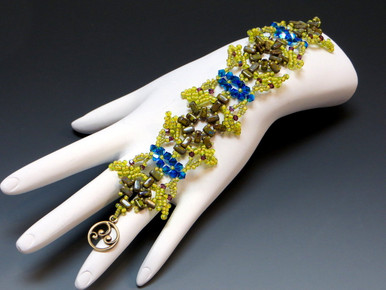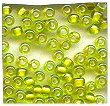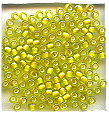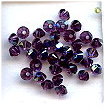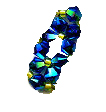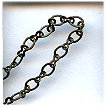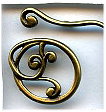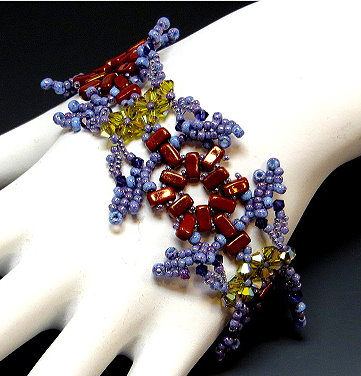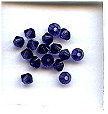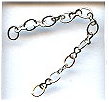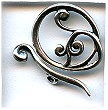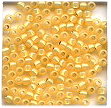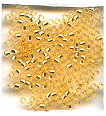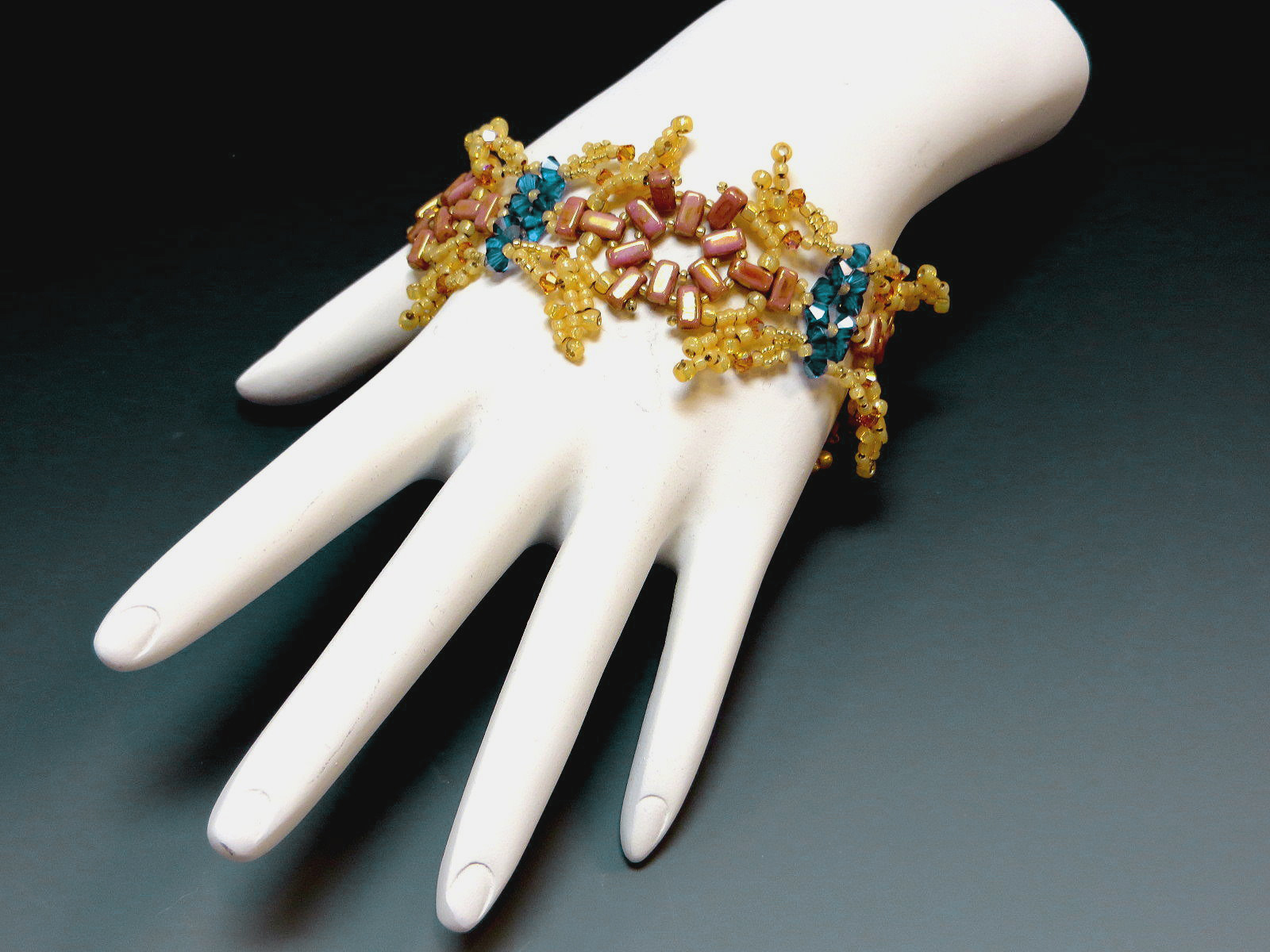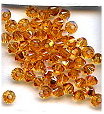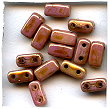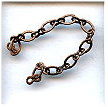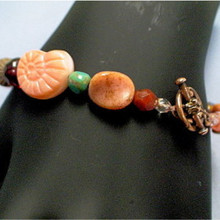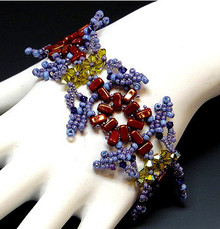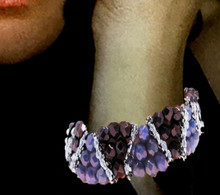Categories
Categories
GAUDI'S STREETSCAPE BARCELONA BRACELET KIT, (1 unit)
Product Description
Gaudi's Streetscape Barcelona Bracelet
Instructor: Warren Feld
Casa Battlo Palette (Yellow Gold and Cornflower Blue)
Intermediate Level
--Bead Weaving Sequence
--Lesson: Non-traditional use of Petersburg Chain Stitch; Using 2-hole beads in your design
--Bracelet
BW2-13-STRBARC: CasaBatllo
Become one with the romantic ceramic tilework lining the sidewalks and streets of Barcelona. Gaudi’s vivid, undulating designs are mimicked with circular peyote, right angle weave and segments of Petersburg Chain.
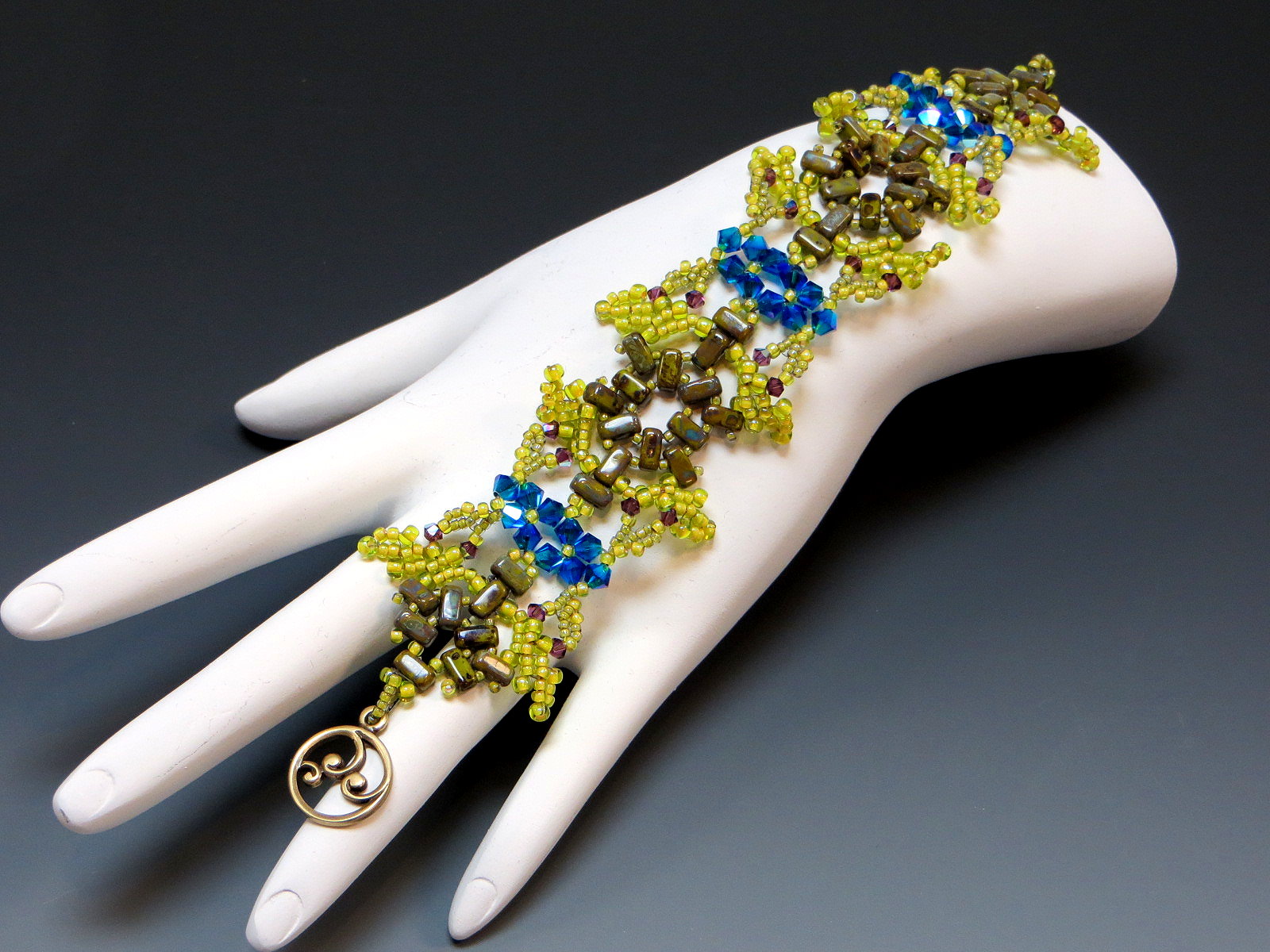
NOTE: Regular retail and wholesale store discounts do not apply to kits.
View Warren as Guest Artist on JTV.com Jewelry Television's show "Jewel School"
as he discusses this specially adapted projects for Jewelry Television.
Streetscape: Barcelona
The GAUDI'S BARCELONA BRACELET KIT
Instructions to make a 6 1/2 - 7" bracelet
Supplies to make up to an 8 1/2" bracelet
|
PLEASE NOTE: Sometimes, because of erratic supplies of beads and other materials, we will need to substitute something of similar color and quality.
Palette #1: Montjuic (chartreuse and capri)
|
Colors may appear differently on different monitors.
Palette #2: Park Guell (red and blue amethyst)
|
Colors may appear differently on different monitors.
Palette #3: Casa Batllo (yellow and cornflower blue)
|
Colors may appear differently on different monitors.
FORMAT OPTONS
(1) KIT with Instructions on CD
(2) CD Instructions Only
About the Kit...
I spent a few weeks in Barcelona, Spain, and marveled at the tile work that lined every inch of every sidewalk and many square feet of many streets. Most of it was created by Antonio Gaudi. The designs are very alive – spirals, curly cues, frenetic lines. And the streets of Barcelona are alive with people everywhere. The sun is warm, the colors both vibrant and muted – the city has a fun feel to it. And this was my inspiration.
Coupled with this intensive emotional sensibility was my desire to try out using the Petersburg Chain stitch in a nontraditional way. I wanted to use segments of chain in a lacy or filigree sense. I liked the juxtaposition of “lacy”, fluttering Petersburg Chain stitch with the harder, more defined circular peyote and right angle weave of my brick streetscape walkway.
I did not have a sketch first. Instead, I let “trial-and-error” lead my stitching paths. But once I hit on the general design, I found I had to do a lot of tweaking.
I always try to build in contemporary design principles into my pieces, which include adding movement and dimensionality to my pieces. The main task here was to determine how to connect the Petersburg Chain areas to each other and to the Streetscape skeletal structure. You will find that my solutions involved some zig-zagged thread paths, and some resolutions of directional flows.
My test piece was in black and white. As I re-did the piece and brought in color, I found I had another series of design issues to reconcile. The piece uses a 4-color palette. This will probably be the last piece I ever do with 4 colors. Very difficult to pick 4 colors, given the imperfect availability of bead colors.
In this GAUDI'S BARCELONA Project...
What You Will Learn:
- Adapting the Petersburg Chain Stitch in a non-traditional way
- Manipulating "shape" and "dimension" in design, through modifications in applying the Petersburg Chain Stitch and the Right Angle Weave Stitch.
- Adding sense of "movement" to piece
- Mixing 2-hole and 1-hole beads within same piece
- Attaching a clasp assembly
TimeFrame:
This bracelet takes about 10-12 hours to complete
TABLE OF CONTENTS
SUPPLIES LIST, p. 4
- I. Planning Your Project, p. 6
Intro – Types of Choices To Be Made In This Project, p. 6
ABOUT PETERSBURG CHAIN, p. 7
COLOR AND PATTERN, p. 7
MANAGING SUPPORT SYSTEMS AND OTHER ARCHITECTURAL ISSUES, p. 8
Conceptualizing, p. 9
IA. Conceptualizing Your Piece, p. 9
IB. Measurement, p. 12
IC. Selecting Materials, p. 13
ID. Sketching a pattern or graph, p. 13
IE. Identifying Potential Areas of Weakness, p. 14
IF. Identifying How To Attach The Clasp, p. 14
IG. Visualizing Your Process, p. 14
IH. Organizing Your Work Space, p. 15
- II. Beginning Your Project, p. 16
IIA. Basic Steps, p. 16
IIA-1. CREATE THE SIDEWALK (Streetscape Skeletal Framework), p. 17
IIA-2. ADD THE FLUTTER, p. 40
IIA-3. ATTACH THE CLASP, p. 57
- IIB. Dealing with Contingencies, p. 63
IIC. Finishing Touches, p. 64
- III. Summary of Learning Objectives You Have Met After Accomplishing This Project, p. 65
- IV. Next Steps, p. 69
IVA. Suggested Readings, p. 69
LEARNING OBJECTIVES
| LEARNING OBJECTIVES BEAD WEAVING | GAUDI'S BARCELONA BRACELET | ||
|
| BEGINNER | INTERMEDIATE | ADVANCED |
| TECHNICAL MECHANICS | |||
| 1. Selecting Materials | BEGINNER |
|
|
| 2. Positioning Your Fingers and Hands, and Holding Your Piece To Work It | BEGINNER |
|
|
| 3. Working with Thread, Waxing Thread, Managing Thread Tension | BEGINNER |
|
|
| 4. Finishing Off Threads in Piece or Extending by Adding Threads | BEGINNER |
|
|
| 5. Working with Beading Needles and Tools Used in Bead Weaving | BEGINNER |
|
|
| 6. Reading Simple Pattern, Figure and/or Graph |
| INTERMEDIATE |
|
| 7. Identifying Areas of Potential Weakness, and | BEGINNER |
|
|
| 8. Determining Measurements, including Width and Length of a Piece, Especially In Relationship To Bead Sizes | BEGINNER |
|
|
|
| |||
|
| |||
| UNDERSTANDING CRAFT BASIS OF STITCH | |||
| 1. Starting the Stitch |
| INTERMEDIATE |
|
| 2. Implementing the Basic Stitch |
| INTERMEDIATE |
|
| 3. Working Stitch in Flat Form |
| INTERMEDIATE |
|
| 4. Increasing and Decreasing |
|
|
|
| 5. Creating Simple Surface Embellishment |
|
|
|
| 6. Creating a Simple Edging or Fringe |
|
|
|
| 7. Finishing Off Your Piece With A Clasp Assembly |
| INTERMEDIATE |
|
| 8. Working Stitch in Tubular Form |
|
|
|
| 9. Working Stitch in Circular Form | BEGINNER |
|
|
| 10. Working Stitch in Spiral Form |
|
|
|
| 11. Working Stitch in Diagonal Form |
|
|
|
| 12. Working Stitch in 3-Dimensions (sculptural or cubic) |
|
|
|
| 13. Working Stitch To Create Open (Negative Spaces), and Split Forms |
| INTERMEDIATE |
|
| 14. Embellishing the Surface of Your Piece |
|
|
|
| 15. Elaborately Embellishing the Project, including Fringes, Edge Treatments, Bails, Straps and Connectors |
|
|
|
|
| |||
|
| |||
| UNDERSTANDING ART & DESIGN BASIS OF STITCH | |||
| 1. Learning Implications When Choosing Different Sizes/Shapes of Beads, or Using Different Stringing Materials |
| INTERMEDIATE |
|
| 2. Understanding That Materials Differ in Terms of W
| |||
 Loading... Please wait...
Loading... Please wait... 